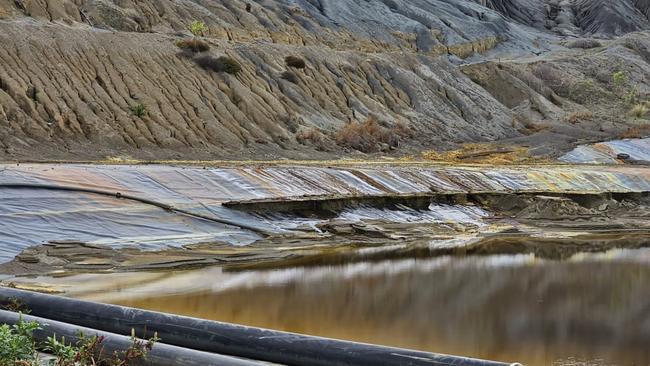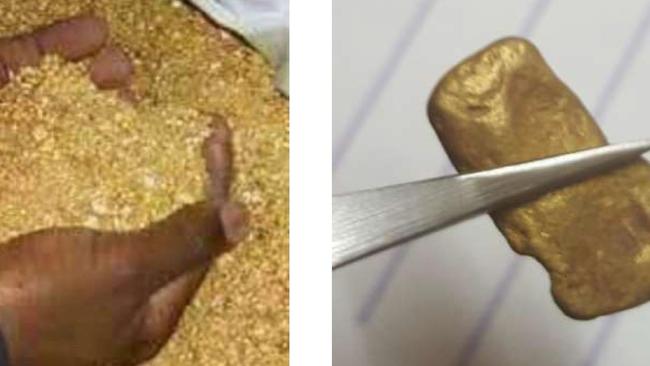David Catsoulis says he’s sitting on trillions of dollars in precious metals: too bad he can't mine it
David Catsoulis says his company, Warwick Gold, has trillions of dollars worth of resources on its tenements in Queensland. The problem is, he can’t legally mine or even explore on the land.

Business
Don't miss out on the headlines from Business. Followed categories will be added to My News.
The good news is that Queensland mining spruiker David Catsoulis says he has discovered more than $2.3 trillion worth of silver and other precious metals in tenements which a previous company was foolish enough to offload to him for a paltry $3.5m.
The bad news is that more than a year after that purchase, Mr Catsoulis’ company, Warwick Gold, doesn’t hold the right to mine or even explore those tenements – and the Queensland Mines Department refuses to accept and process the application.
The numbers being touted by Mr Catsoulis for the Silverspur project in the Texas region of Queensland are extreme.
If the company achieves its stated ambition – elucidated in regular updates to investors and now documented on a new website – the company would soon take its rightful place among its global peers, BHP, Rio Tinto and Glencore.
In one of the recent updates Mr Catsoulis said the Silverspur project, a “super Ag (silver) deposit’’, would yield $100,000 per tonne of ore when processed.
This translates to $10bn per “block” of ore, with more than 100 of these blocks available, he said.

This brings the total dollar figure to more than $1 trillion from the silver alone.
Adding to the bankability of the project, Warwick has “discovered” high-grade gold at more than 800g per tonne at Silverspur. A decent hard rock gold mine these days can get by at about 1g per tonne.
There is also high-grade iridium at more than 5kg per tonne for another trillion dollars worth of resources, not to mention the scandium at $50,000 per tonne.
The Warwick Gold website says the company aims to start processing ore in the first quarter of 2024 – which is a problematic claim as the company doesn’t even have the right to mine the tenement, let alone have progressed any mining plans through the necessary government approval processes.
“These metals, once cleaned, will then be treated initially for the removal of the high-grade silver powder from our stage 2 Silverspur waste material,’’ the website says.
“This is between $100m and $1.0bn of recovered precious metal per month from a minimum 10,000 tonnes of ore. The investors’ 25 per cent of our deal will yield you up to $250m a month from this work beginning in Q1/2024.’’
The geological thinking behind the huge, high-grade metal deposit in the Texas region, achieved with the help of “independent experts’’ is that “a massive, metalliferous Asteroid has impacted within the Texas region of SE Queensland’’.
And the previous owners of the project, the most recent being Thomson Resources, “just did not crush their ore to a fineness which was required to liberate the key, precious metal, platinum group elements, silver and gold”, Mr Catsoulis says in a shareholder update dated December this year.

Mr Catsoulis has been raising funds for this and other projects in Papua New Guinea for at least four years.
In late 2019 his company, PGL Gold, was offering a 200 per cent return inside three weeks for money invested into his gold project in the Maprik region of PNG.
So for your initial $100,000, you’d get $200,000 back almost immediately.
“Thereafter, for every 100,000 of the company shares held, investors will receive a minimum of $100,000 per month for the life of the mine (estimated to be between 12/24 months),” a shareholder briefing document says.
The Australian is yet to come into contact with any shareholders who’ve made money from investing into this, or in fact any projects with Mr Catsoulis, however has had contact with several who have lost money – one having invested in the region of $1m, which he now fears he has lost.
Another of Mr Catsoulis’ companies, Impact Gold, which PGL was folded into, had in-ground resources of about $100bn, Mr Catsoulis has previously claimed, and was considering a $20.7bn listing on the London Stock Exchange.
Mr Catsoulis, twice bankrupt in the past, is being investigated by the corporate regulator, ASIC, according to sources, and Warwick Gold itself was briefly placed in administration twice this year.
In the midst of the second administration Mr Catsoulis told The Australian that Warwick Gold was considering a $250 per share buyout offer which, given it had at the time 8.9 million shares on offer, would have valued it at $2.24bn.
Mr Catsoulis’ waterfront house on the Gold Coast was sold this year for $3.6m after the company which owned it was placed in administration.
Mr Catsoulis has in the past strongly defended his resource valuations, ascertained in part using so-called “Resonance Frequency Geo Technology” (RFGT), which his companies claim to have proprietary access to.
The technology is not used in the broader mining sector for resource definition.
He has also accused The Australian of bias, and says investment opportunities have dried up because of unduly negative articles in the past.
The Australian has contacted Mr Catsoulis for comment, and for clarification of his multitrillion-dollar valuations.
More Coverage
Originally published as David Catsoulis says he’s sitting on trillions of dollars in precious metals: too bad he can't mine it





